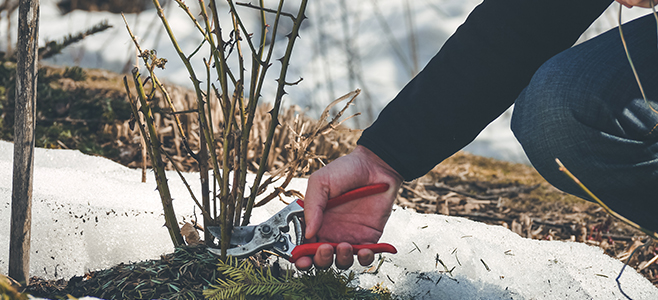
Looking for plants for sale to add to your garden? You may not realize it, but some fruit trees can provide you with tasty fresh fruit even during the winter months!
There are lots of great reasons to plant winter fruit trees. Apart from providing you with the sheer joy of picking fresh fruit from your own garden, fruit trees contribute to a healthy ecosystem, produce fresh oxygen, and encourage wildlife to flourish. Plus, winter-grown fruit usually contains the nutritional benefits needed for warding off winter-borne illnesses like colds and flu viruses.
Below are some types of trees you’ll find at Citrus.com that will have you enjoying fresh, homegrown fruit through the winter months:
Citrus Trees
Hardiness Zones 9-11
Citrus.com is known for our online citrus trees. Have you ever dreamed of growing sweet and tangy citrus fruit from your own citrus trees? There are many types of citrus trees, and there’s nothing like oranges, grapefruits, lemons, and limes for adding a boost of sunshine on a gray winter’s day!
Native to warm, humid climates, these tropical trees are unique choices for homegrown fruit. Citrus trees have a lot going for them. For one thing, they’re evergreens, which mean they don’t lose their leaves in the wintertime. For gardeners who prize ornamentals, this makes them just as valuable – if not more so – than their delicious, healthy fruit!
Citrus trees are moderately sized, tending to stay around between sixteen to forty-nine feet tall, making them a great choice for smaller gardens. Even better, you can still get fruit even if you only plant one or two – most citrus trees are self-pollinating. The best citrus trees also put out many pretty blossoms before fruiting, which give off a wonderful citrusy smell.
Apple Trees
Hardiness Zones 3-8
Apple trees can grow just about anywhere in the continental United States, and, depending on the variety, most fruit anywhere from summer to early winter. There are lots of varieties of apple trees, so be sure to find the ones that fit your zone.
Apart from the fact that fresh apples have many health benefits and add wonderful color to your fall and winter garden, apple trees make wonderful additions to your backyard because they produce every year. They’re also prolific producers, with a single tree often producing four to five bushels in a season. The trees tend to be low maintenance, and start fruiting early in their lives, so you won’t have to wait long for fruit. They also put out pretty, fragrant blossoms in the spring.
Persimmon Trees
Hardiness Zones 5-9
When ripe, persimmons have mild, sweet taste, somewhat like honey. Their rich flesh is similar in texture to that of an apricot, the skin is a bit tougher than an apple’s. They’re a great addition to many dishes and also can be made into a tasty jam.
If you have a sunny location in which to plant a persimmon tree, you can wind up with so much fruit the branches might break from the weight! Because of this, you’ll need to prune the tree regularly for its own health. The pretty, bright orange fruit doesn’t attract pests readily.
Otherwise, persimmon trees are fairly low maintenance. The soil doesn’t have to be great, and they tolerate both dry and damp conditions tolerably well. Cross-pollination isn’t necessary for producing fruit, so you may be able to get away with adding just one to your garden (a good thing, since the trees can grow quite large and should have at least twenty feet of space between them).
Pomegranate Trees
Hardiness Zones 7-12
Pomegranates – the “unofficial fruit of winter” – can be a bit temperamental, but if you live in the right location, the effort to produce this delectable fruit can be well worth it. The trees are small, long-lived, with bright, shiny-green foliage and a long flowering season. They produce an exotic fruit that is relatively resistant to pests and disease.
That said, pomegranate trees are sensitive to frost in the fall and spring months, and they don’t mature well in cooler climates. They prefer loamy soil with good drainage and humid conditions.
Indoor Trees for Colder Climates
If you live in USDA Zones 1-5, your winter fruits selection may be limited.
But growing citrus trees doesn’t have to be limited to the usual citrus growing zones if you go with a dwarf tree – you can grow lemons, key limes, grapefruit, oranges and more even if you live in cooler climates — simply plant your dwarf tree in containers and move them indoors for protection before cold temperatures arrive.
Related Links:
• 5 Fruit Trees That Can be Grown Indoors
• Proper Lighting for Indoor Citrus Trees
• Beware: How to Protect Your Tree from Wildlife
• Citrus Trees: Guide to Proper Spacing in an Orchard

